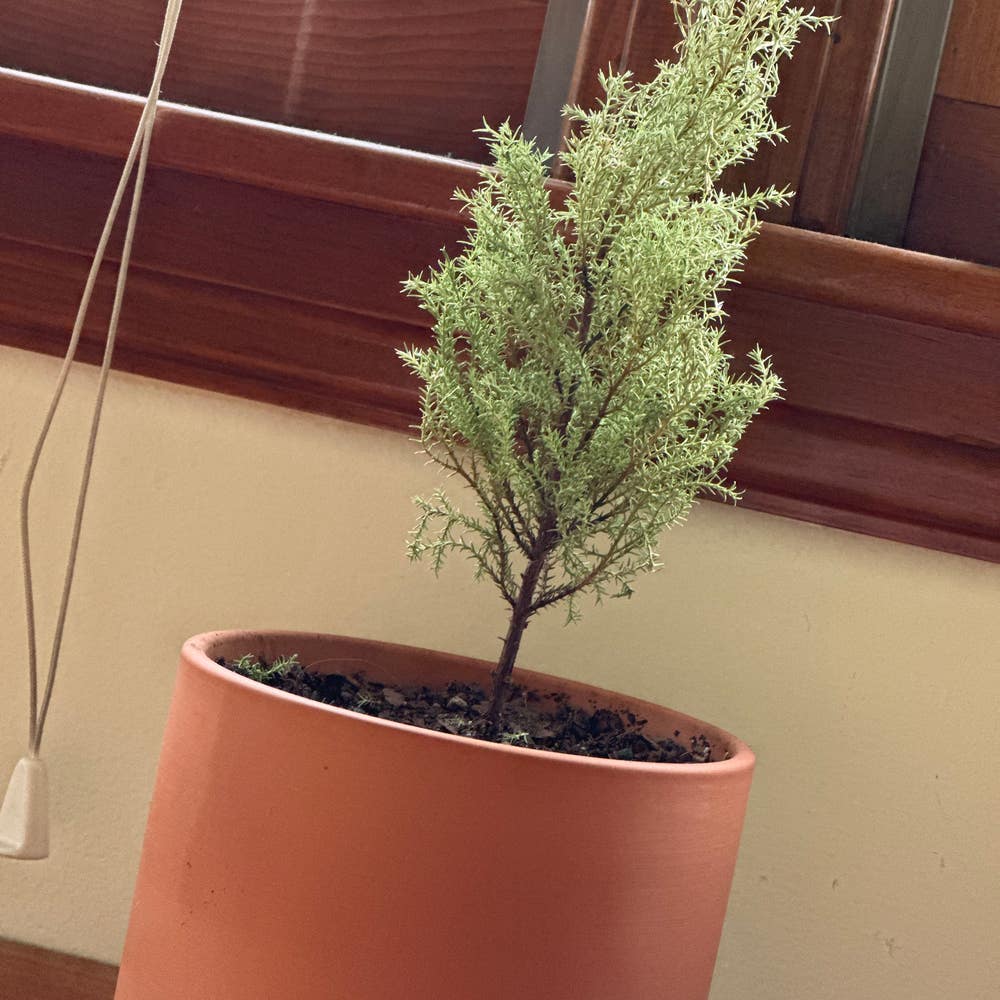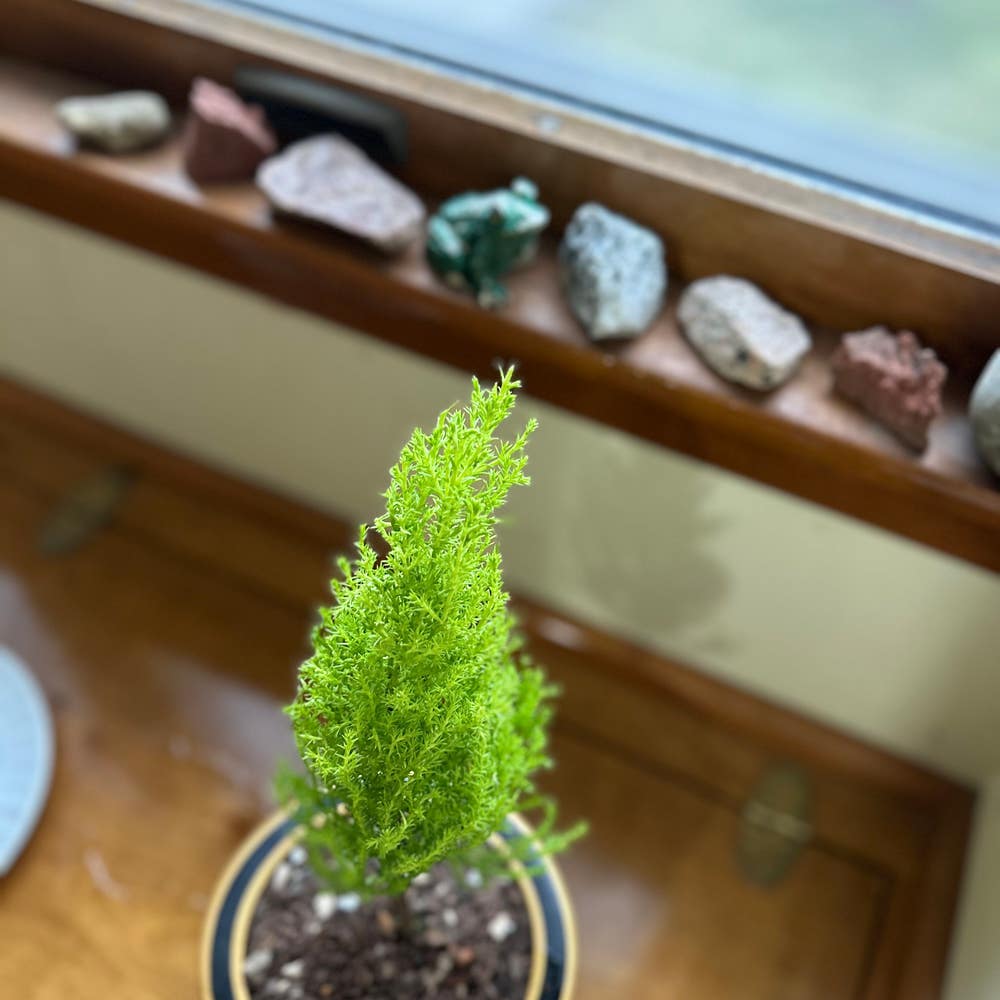What Temperature Does My Cupressus macrocarpa Need?
Dec 20, 2023•4 min read
Avoid the wilt or chill 🌡️—discover how the right temp keeps your Cupressus macrocarpa thriving!
- Ideal range 65-75°F (18-24°C) for Cupressus macrocarpa health.
- Watch for wilting or soggy spots as signs of temperature stress.
- Shade in heat, mulch in cold to protect from extreme temperatures.
Nailing the Perfect Temperature for Your Cupressus macrocarpa
🌡️ What's the Sweet Spot?
Finding the ideal temperature for your Cupressus macrocarpa is like hitting the jackpot on a slot machine. These trees thrive in a comfort zone of 65-75°F (18-24°C). It's the Goldilocks principle in action—not too hot, not too cold, but just right.
When Things Get Too Hot or Too Cold
When temperatures soar above 85°F (29.5°C), your Cupressus macrocarpa might start to show signs of heat stress—think of it as the plant's way of saying it's sweating bullets. On the flip side, dropping below 50°F (10°C) is the tree's kryptonite. Frost is a no-no; it can turn those lush green needles into a brown, crunchy mess faster than you can say "ice ice baby." Keep it consistent to avoid turning your cypress into a temperature drama queen.
Recognizing When Your Tree is Feeling the Heat (or Chill)
🌡️ Telltale Signs of Temperature Trouble
Cupressus macrocarpa, like a canary in a coal mine, signals distress when temperatures aren't just right. Leaf wilting is your first red flag, hinting at a tree in the throes of heat stress. Scorched leaf edges and a sudden leaf drop are the tree's way of crying out for cooler climates. Conversely, cold stress manifests as dark, soggy spots on leaves, with new growth showing brown or black tips as if touched by frost's icy fingers.
The Consequences of Ignoring the Warning Signs
Let's get real: ignoring these signs is like ignoring a smoke alarm. Prolonged exposure to temperature extremes can lead to a cascade of issues. Heat can cause your tree to become a drama queen, with stunted growth and premature fruit drop. Cold, on the other hand, can turn your tree into a frostbitten mess, inviting diseases like leaf spot or the dreaded root rot to take hold. Over time, this can reduce the tree's vitality, shortening its lifespan and leaving it a shadow of its former self.
Keeping Your Cupressus macrocarpa Comfy Year-Round
🌞 Battling the Summer Blaze and Winter Frost
The ideal temperature for Cupressus macrocarpa doesn't include the extremes of summer heat or the chill of winter frost. To shield your tree from scorching temperatures, provide shade during the hottest parts of the day. This can be achieved with a strategically placed sunshade or by relocating potted specimens to a less exposed area.
In winter, insulate the root zone with a thick layer of mulch to fend off frost damage. For potted trees, consider moving them to a sheltered spot, perhaps against a south-facing wall, to capitalize on any available warmth. Remember, while Cupressus macrocarpa can handle a cool breeze, they're not cut out for a freeze.
🌡 Quick Fixes for Sudden Temperature Swings
When the thermometer takes an unexpected leap or dive, react promptly to protect your Cupressus macrocarpa. For a sudden heatwave, increase watering slightly to help the tree cope with the extra transpiration. However, avoid waterlogging the soil, as this can lead to root issues.
If a cold snap is forecasted, wrap the tree in burlap or use a frost cloth to provide a temporary barrier against the chill. For indoor trees, keep them away from drafty windows and doors, and ensure they're not too close to heat sources that can dry them out. Quick action can prevent temperature stress from leaving a lasting mark on your Cupressus macrocarpa.
When the Air Feils Different: Humidity and Your Cupressus macrocarpa
💦 A Touch on Humidity
Humidity isn't just a backdrop; it's a key player in the health of your Cupressus macrocarpa. While temperature sets the stage, humidity writes the script for how well your tree will perform.
🌡️ The Humidity-Temperature Tango
Consistency is the name of the game. Your Cupressus macrocarpa doesn't appreciate wild swings in humidity any more than it does in temperature. Aim for that 40-60% sweet spot to keep your tree from throwing a fit.
🕵️ Quick Humidity Checks
No need for guesswork. Use a hygrometer to keep tabs on humidity levels. If your tree's leaves start looking more like potato chips than foliage, it's time to up the humidity. On the flip side, if you're seeing a bit too much droop, it might be time to dial it back.
🌬️ Humidity Helpers
If your indoor air is drier than a stand-up comedian's wit, consider a humidifier. Or, for a low-tech solution, a pebble tray with water can be a lifesaver. Just remember, stagnant air is about as welcome as mold at a garden party, so keep the air moving.
🍂 Seasonal Shifts
As the seasons change, so do your tree's humidity needs. Don't let your Cupressus macrocarpa suffer from the indoor equivalent of a dry desert or a swampy marsh. Adjust your care routine to keep that humidity in the Goldilocks zone – just right.



